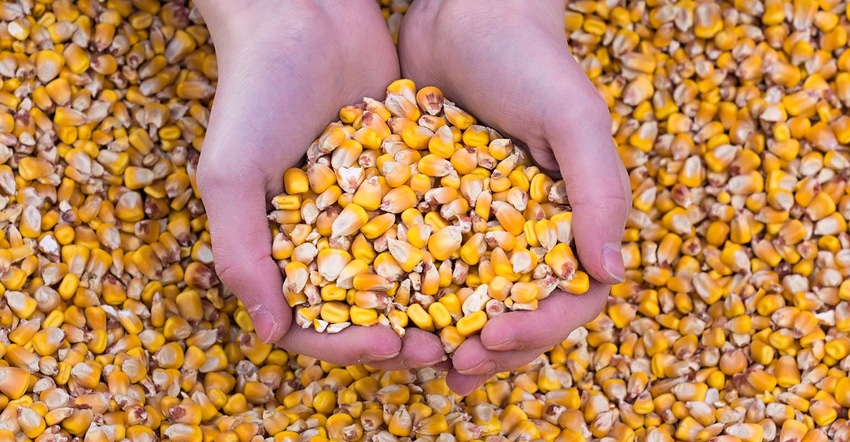
USDA releases its Quarterly Grain Stocks report and 2021 Small Grains Production Summary tomorrow. The Sept. 30 Grain Stocks report provides the latest look at USDA’s best estimates for old crop supplies, thereby providing updated usage information for corn and soybeans for the 2020/21 marketing year.
Last year’s Sept. 30 report famously saw smaller stocks and higher usage rates, sparking rallies for corn and soybean futures prices that did not end until this past summer. Will tomorrow’s reports kick off another rally?
Here are a few factors we are keeping an eye on that will indicate a bullish – or bearish – harvest season for U.S. farmers.
Corn usage rates attract main market focus
As of the Sept. 10 World Agricultural Supply and Demand Estimate report, USDA projects 2020/21 ending corn stock volumes at 1,186 million bushels. That total widened as ethanol production rates and corn export rates slowed in the waning days of the 2020/21 marketing year, which ended on Aug. 31.
Tomorrow’s corn stocks number will be highly dependent upon usage rates over the past three months. The average trade guess suggests that about 30 million more bushels of usage needs to be factored into the latest WASDE ending stocks value but where will that come from?
More clear guidance on that likely won’t come until the October 2021 WASDE report next month. Dismal ethanol production rates over the last two months reduce the likelihood of ethanol usage as a source. Year-to-date cattle inventories are fractionally (1%) lower than the same volumes this time last year.
USDA cut 105 million bushels from 2020/21 corn export forecasts between July and September on lower-than-expected late season loading paces. Not coincidentally, U.S. corn exports to China tapered off in July and August as it harvested a larger corn and wheat crop.
If trade estimates are realized, 2020/21 ending stocks currently at the fourth tightest level (7.9% stocks-to-use ratio) on record would narrow to the third tightest and compete with 2012 (7.4%) for the second tightest. That could create some lucrative cash opportunities for growers in areas where harvest has not progressed as rapidly.
Little change expected for soybeans
It’s no secret that soybean stocks are tight – and will likely remain that way for some time. At a current stocks-to-use ratio of 3.9%, 2020/21 U.S. soybean stocks are currently at the second tightest on record, trailing only 2013 (2.6%). But will that change tomorrow?
The trade is skeptical it will. USDA’s current ending soy stocks estimate of 175 million bushels is in line with market estimates for tomorrow’s report.
But bear in mind that since June, USDA has found 56 million more bushels of old crop soybeans in the form of unrealized crush production. A better-than-expected August crush could draw down USDA’s figure tomorrow.
At any rate, with strong global soyoil demand and increasing domestic biodiesel production capacity, expect another year of tight supplies for the soybean market. Export markets are already heating up, especially as the Gulf emerges from Hurricane Ida flooding and wind damage.
In the event Chinese demand lags on falling hog prices this year, expect domestic crush processors to be the first in line to snap up those new crop bushels.
More revisions?
It is not unprecedented that USDA will also make changes to prior quarters’ stock volumes. If you recall back to a year ago, the broad market rally was largely spurred by revised stock readings of prior quarters, not solely because of the updated third quarter stocks readings.
USDA often receives more accurate stocks and usage information after releasing the quarterly reports. This was especially prevalent during peak pandemic months last year. So don’t rule out additional changes in tomorrow’s reports.
Wheat supplies shrink
In addition to usage rates, USDA will release updated estimates on 2021 wheat production today. Historic droughts in the Northern Plains and Pacific Northwest (not to mention the Canadian prairies) stunted the white, spring, and durum wheat crops in the region.
As a result, supplies are likely to tighten to at least the tightest levels since 2013/14. But of more interest tomorrow may be USDA’s usage rates for the first quarter of the 2021/22 marketing year.
Peak export season is about to wrap up for the U.S. wheat market. Marketing year to date wheat shipments are 18% lower than the same time a year ago. To be sure, the tight supply situation and a rally in the dollar have made U.S. wheat a less attractive option on the global market. And Hurricane Ida damage at the Gulf of Mexico certainly put a dent in wheat loading paces during peak loading times.
But will smaller supplies offset lower export loading paces? Today’s report will provide more insight on that matter. Food consumption rates for wheat in the U.S. were increased slightly in last month’s WASDE report. And USDA’s top economists expect more wheat to be fed to livestock in the U.S. this year than last.
Corn will undisputedly grab the top headlines in tomorrow’s report. But don’t sleep on wheat. The world’s top exporters are all under supply pressure this year, which could create some unique off-season export opportunities for U.S. wheat.
Today’s report may not have the firepower of last year’s report, but it will certainly lay the groundwork for another potentially profitable year for U.S. row crop producers.
About the Author(s)
You May Also Like






